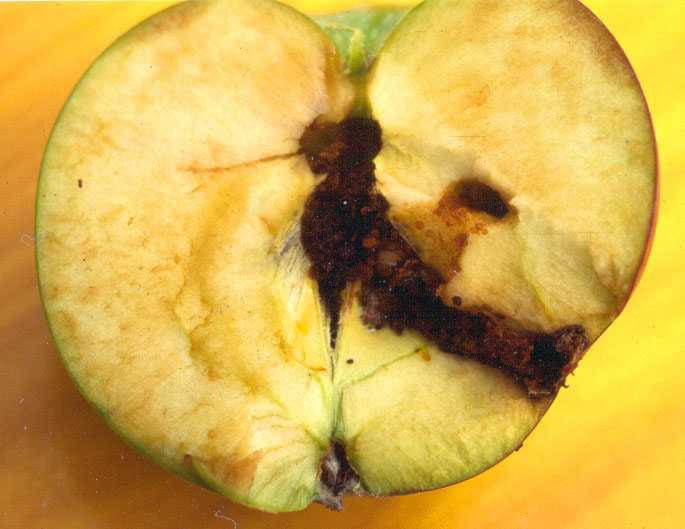The Okanagan Kootenay Sterile Insect Release program has been in place for close to 30 years, but orchardists are still facing problems with codling moth infestation in some apple orchards.
Melissa Tesche, general manager of the program, said Summerland, Penticton and Naramata have been struggling to control the pests.
The codling moth is a small grey moth whose larvae feed on apples, pears and related fruit. It was accidentally introduced to British Columbia from Europe in the early 1900s and has caused damage to apple and pear orchards.
Depending on the temperatures, the moths can produce several broods in a season.
The Sterile Insect Release program involves pairing sterilized male insects with wild female insects. The females are unable to produce offspring.
The work was researched at the Pacific Agri-Fod Research centre in Summerland over 30 years and the program was initiated in 1992.
The first sterile codling moths were released in the South Okanagan in 1994 and in the central and north parts of the valley in 2002.
READ ALSO: New tool to help Okanagan fruit growers deal with pest management
READ ALSO: ‘Serious pest’ starting to invade the Okanagan Valley
While this program has controlled the growth of codling moth populations, the pest has not been eradicated, Tesche said.
She added that the moths are not a problem in all orchards. Instead, the worst 10 per cent have 75 per cent of the codling moths and the worst one per cent have 25 per cent of the moths.
Tesche said climate change is one challenge in dealing with codling moth populations.
Another challenge is the movement of wood and bins from orchards, since larvae will hide in tree bark.
The moth larvae can hibernate in bark of tree trunks for up to two years.
As a result, fruit growers are urged not to store or sell firewood from infested trees. Instead, the trees should be burned, chipped or otherwise destroyed.
The small orchards in the region are also a factor in codling moth problems.
In some cases, small orchards were purchased as retirement properties and are being managed by inexperienced farmers who do not understand how to control the moth populations.
In other cases, a fruit grower is farming several small parcels, which creates challenges when spraying for the moths.
Staffing is also a challenge, Tesche said. The program has a general manager, 16 full-time staff and around 70 seasonal staff.
When the program was started, there were around 8,900 hectares of apple orchards in the Okanagan and Kootenays. Today, that number has dropped to around 3,300 hectares.
Since funding is based on parcel and land taxes, the reduced land for apple orchards is affecting the money collected for this program.
However, the program has been able to sell some sterilized moths to Washington State for use in a similar program there.
To report a typo, email:
news@summerlandreview.com.
news@summerlandreview.com
Like us on Facebook and follow us on Twitter.
